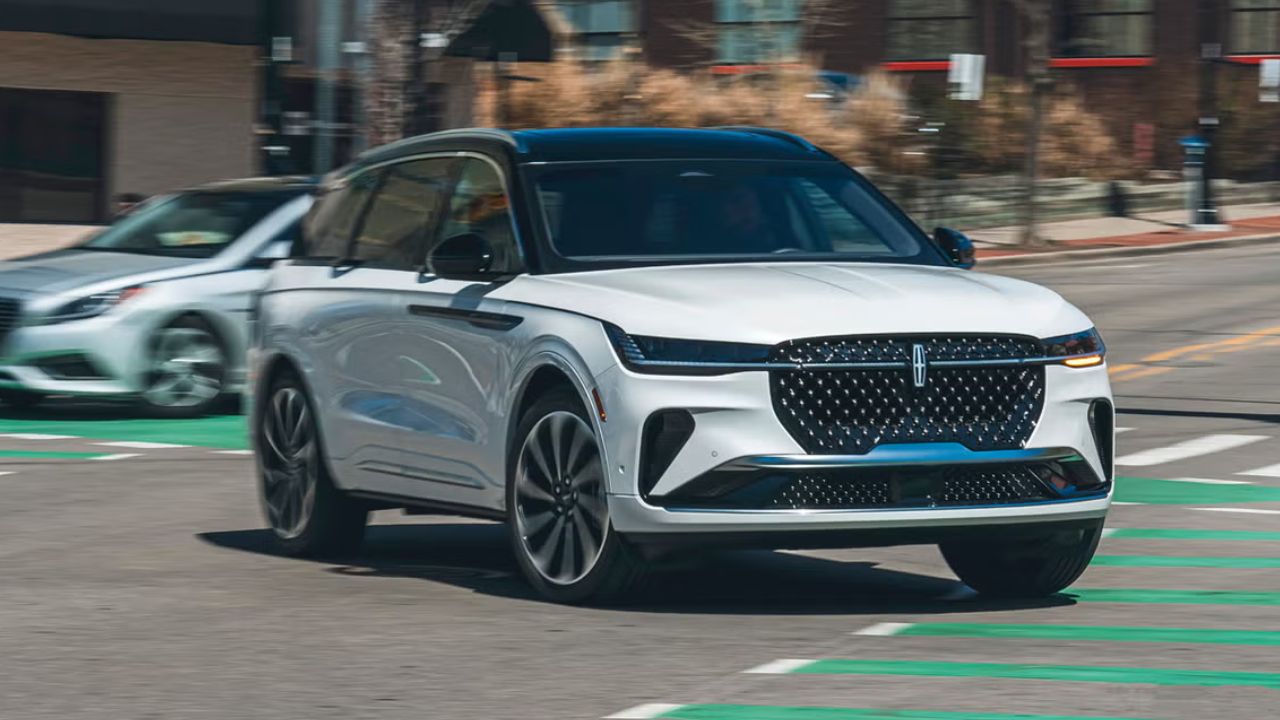When you’re spending nearly $80,000 on a luxury SUV, you expect everything to work flawlessly. The 2025 Lincoln Nautilus Black Label delivers on most fronts – think spa-like massages, premium materials, and that distinctive Lincoln quiet ride. But there’s one feature that’s been causing serious frustration for long-term owners: the BlueCruise hands-free driving system.
After months of real-world testing, here’s what you need to know before making that big purchase decision.
What BlueCruise Promises vs. Reality
BlueCruise sounds amazing on paper. You can theoretically cruise hands-free on mapped highways while the system handles steering, acceleration, and braking. The idea is simple: set your destination, activate the system, and let the Nautilus do the work while you relax.
The reality? Not quite so smooth.
The Nautilus comes equipped with BlueCruise version 1.2, which feels outdated compared to what competitors offer. While Ford has already moved to BlueCruise 1.5 on newer models, Nautilus owners are stuck with the older technology that can’t be upgraded due to hardware limitations.
The Coffee Test That Says It All
Here’s a real-world scenario that perfectly illustrates the problem: You’re cruising down the highway with BlueCruise engaged, feeling confident enough to take a sip of your morning coffee. The moment that cup blocks the driver monitoring camera’s view of your eyes – even for just a second – the system starts beeping warnings at you.
This isn’t about safety being optional. Everyone understands that hands-free doesn’t mean attention-free. But when you can’t perform basic tasks like adjusting the air vents, glancing at the touchscreen to activate seat massage, or yes, drinking your coffee without triggering alerts, the system becomes more stressful than helpful.
Compare this to GM’s Super Cruise system, which gives you much more leeway for these everyday actions. The difference in user experience is night and day.
Highway Coverage: The Gaps Are Frustrating
Limited Mapping Creates Real Problems
Despite Ford claiming 130,000 miles of mapped roads, the coverage feels inconsistent where it matters most. Take a drive from Detroit to the Canadian border on I-75 – a major highway route – and BlueCruise will randomly deactivate for no clear reason. Sometimes it works, sometimes it doesn’t, and you never know which you’ll get.
Even more frustrating is the experience on I-94 from Detroit to Port Huron, Michigan. This is a straight, well-maintained highway that sees heavy traffic daily. Yet BlueCruise drops out repeatedly along this route, forcing drivers to take manual control when they least expect it.
Meanwhile, GM’s Super Cruise boasts 750,000 miles of mapped roadways, and Tesla’s system can theoretically work anywhere (though with its own set of challenges).
The Steering Wheel Problem That Drives You Crazy
Missing Technology Makes Everything Harder
One of the most annoying issues is the lack of capacitive touch sensing in the steering wheel. This means the system can’t actually tell when your hands are on the wheel – it only knows when you’re actively moving it.
The result? Constant nagging to “put your hands on the steering wheel” even when they’re already there. You end up having to wiggle the wheel every few minutes just to prove you’re paying attention, which defeats the purpose of hands-free driving.
Other systems let you rest a small amount of torque against the wheel to maintain contact without constant movement. The Nautilus doesn’t offer this option, making longer drives feel like a battle with your own car.
What’s Coming Next (But Not For Current Owners)
BlueCruise 1.5: Too Little, Too Late
Ford has addressed many of these issues in BlueCruise 1.5, which launched on the refreshed 2025 Mustang Mach-E. The newer version includes:
- Automatic lane changes when traffic ahead is slow
- Better communication about what the system is doing
- Improved curve handling and lane stability
- More tolerant driver monitoring
- Enhanced ability to handle basic tasks without interruption
The problem? These improvements require hardware upgrades that aren’t available for the current Nautilus. Current owners are essentially stuck with an inferior system until they buy a completely new vehicle.
BlueCruise 1.5 will arrive on the 2026 Nautilus, Aviator, and Ford Explorer. But that doesn’t help anyone who bought a 2025 model expecting cutting-edge technology.
Should This Change Your Buying Decision?
The Bottom Line for Potential Buyers
The Nautilus Black Label excels in many areas – luxury, comfort, build quality, and overall driving experience. The BlueCruise issues don’t make it a bad SUV; they just make one of its premium features frustrating to use.
If hands-free highway driving is a must-have feature for your daily commute, you might want to consider:
- Waiting for the 2026 model with BlueCruise 1.5
- Looking at competitors like Cadillac with Super Cruise
- Focusing on the Nautilus’s other strengths and treating BlueCruise as a bonus rather than essential
For buyers who prioritize luxury amenities over cutting-edge driver assistance, the Nautilus still offers exceptional value. The massage seats, premium audio system, and refined ride quality remain impressive at this price point.
The hands-free driving technology will improve, but current buyers need to go in with realistic expectations about what BlueCruise 1.2 can and can’t do reliably.
